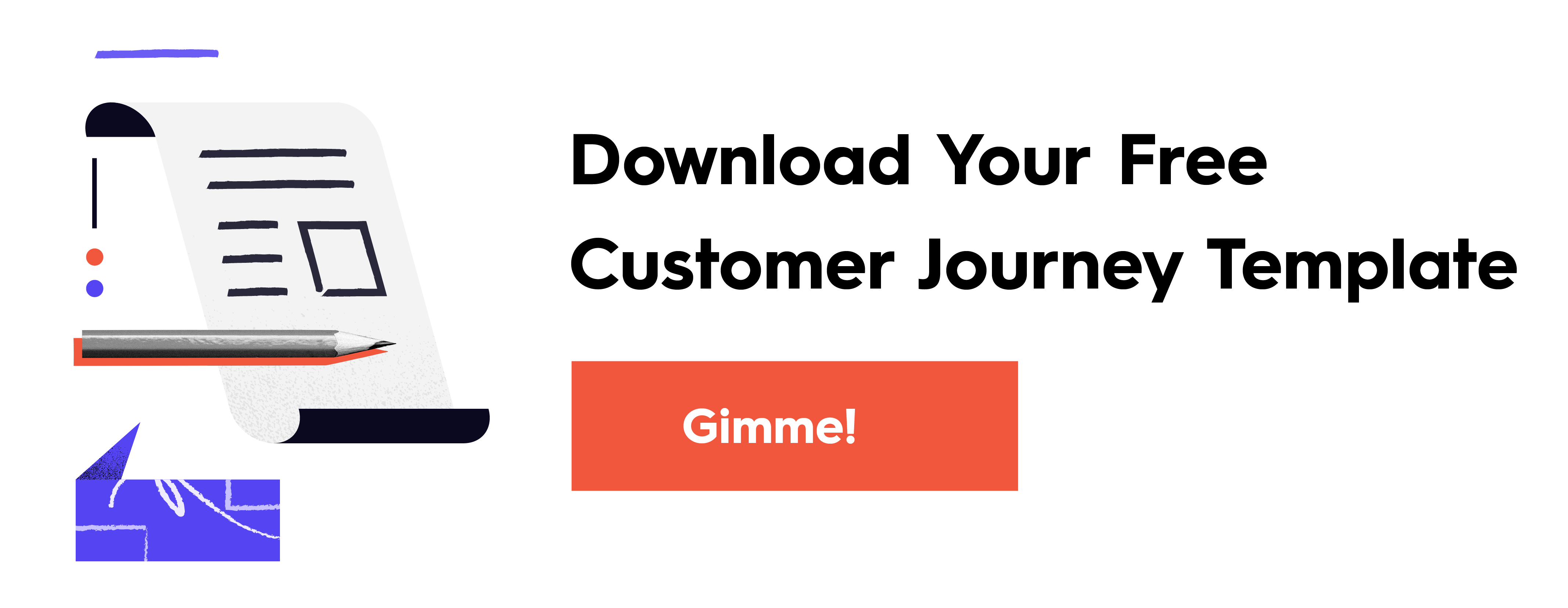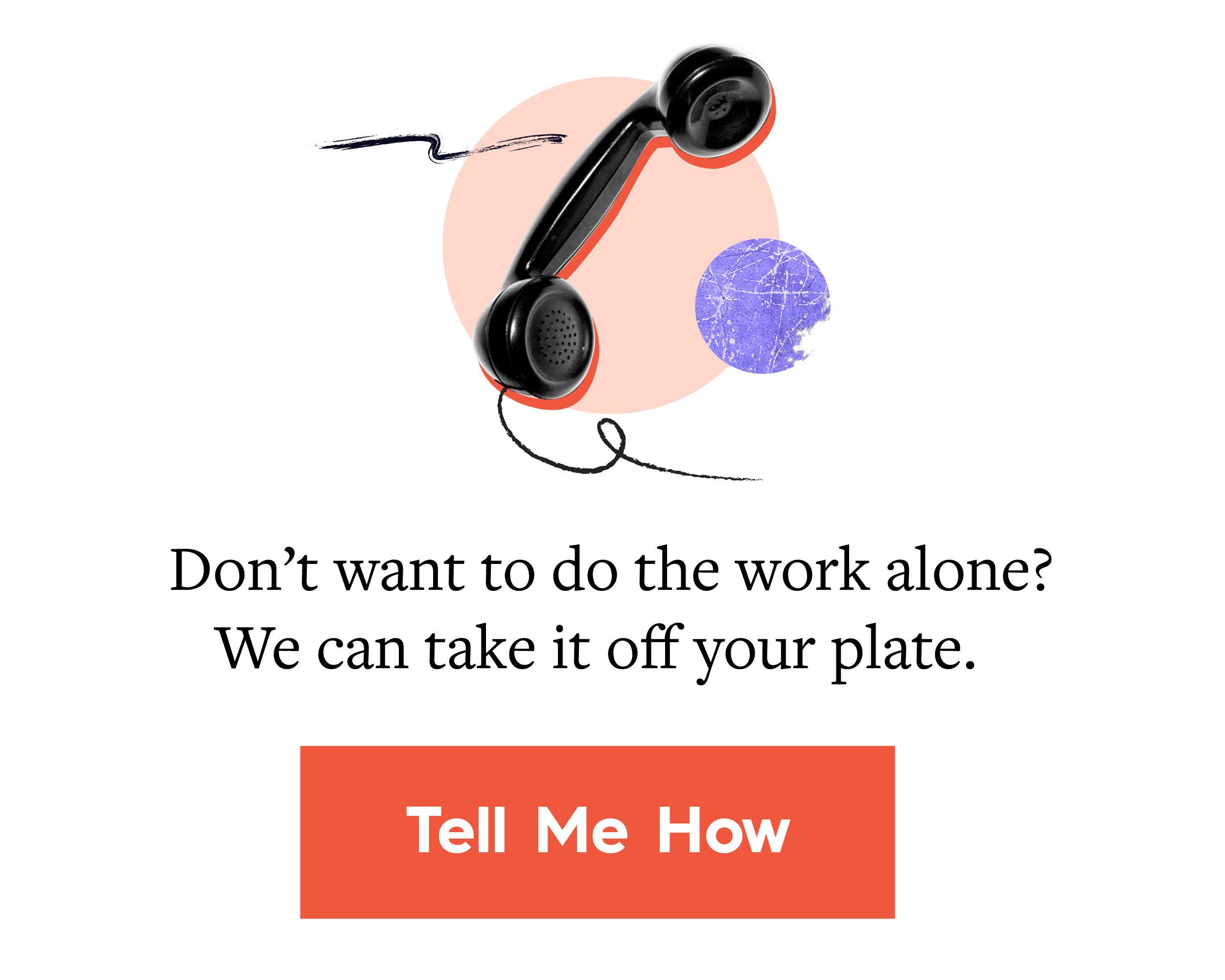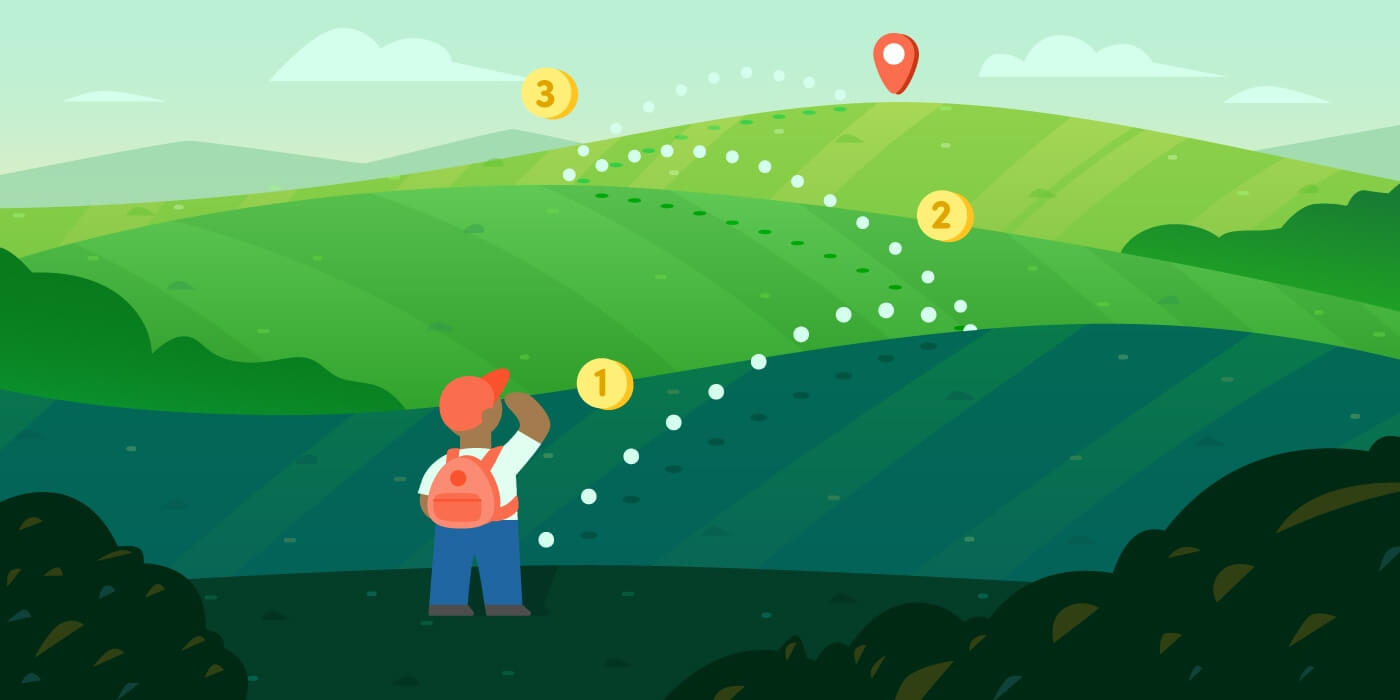Good content nudges people to take action, to move one step closer to your brand—and, as a result, closer to one day becoming a customer. But how do you ensure your content actually inspires action? Create a customer journey map that clearly outlines:
- Who you’re trying to reach (aka your marketing personas).
- What those people want/need to hear from you at each stage of the customer journey.
With these insights, you can effectively deliver the right message to the right people at the right time, prompting them to take action. Unfortunately, while many marketers do craft marketing personas, according to CMI’s 2019 B2B Content Marketing report, only 52% of marketers craft content based on specific stages of the customer journey. Worse, some don’t even map their customer journey.
This is alarming. That means marketers put in the work to identify exactly who they’re trying to reach with their content, but they don’t think critically about what they’re saying with their content—and when they’re saying it. Basically, they sabotage themselves before they even start.
If you haven’t mapped your customer’s journey yet or you don’t use it to influence your messaging, it’s time to change that ASAP.
Luckily, we can help you do that. Here, we’ll show you how to create a customer journey map and offer tips on how to use it to make your content more effective. Before you start, download our free template to work through the process.

5 Ways a Customer Journey Map Improves Your Content Strategy
Why do you need to map your journey? Because it’s the most effective way to get a complete picture of your ideal content ecosystem. It’s a simple exercise that benefits your brand by helping:
- Bring clarity to your customer’s emotional experience. What are they experiencing at each stage? What do you want them to experience? This insight helps you identify the content that can support and reinforce those feelings.
- Spot your strengths and weaknesses. It’s easy to get so bogged down in content you lose perspective of how well your content is actually working. Mapping your customer journey lets you see where you might be failing or forgetting to serve people, or where you might be under-investing or over-investing your efforts. For example, after mapping our customer’s journey, we realized we were knocking it out of the park in our pre-consideration stages but seriously lacking in our loyalty stage. This made us invest more in nurturing our client relationships.
- Know what works (and what doesn’t). Nobody wants to waste time, money, or effort on something that doesn’t work. Even if you know where you’re lacking and making changes to fix it, you don’t always know if you’re improving. Mapping your customer’s journey lets you identify the right KPIs and metrics to help you figure out if you’re succeeding.
- Assign roles and responsibilities. With a clear customer’s journey map, there’s no confusion about who owns what at what stage (specifically between sales and marketing). This helps your team stay active and accountable, and helps you make better decisions about where to allocate resources.
- Tell the right stories. If your messaging is misaligned or miscommunicated, you’re wasting your efforts. More clarity around appropriate messaging helps you ensure you’re saying the right thing at the right time.
Luckily, mapping your customer’s journey isn’t as intimidating as it sounds.
How to Create a Customer Journey Map
If you’re ready to build your journey, here’s how to do it in five simple steps.
1) Have the right people in the room.
To create a comprehensive map of your customer’s journey, you need a team with a combined end-to-end understanding of how your business works. Assemble a team that can fill in those blanks, including marketing, sales, and high-level leadership. Everything you do is in service of your larger business goals, so it’s important to ensure that your buyer’s journey (and related messaging) is aligned to serve those goals.

2) Plot the stages of your customer’s journey.
We suggest whiteboarding this with the team. You can use our customer journey map template or create your own. Start by plotting out the five stages:
- Stage 1: Awareness
- Stage 2: Consideration
- Stage 3: Analysis
- Stage 4: Purchase
- Stage 5: Loyalty
3) Determine your KPIs for each stage.
You manage what you measure. There’s no point in fleshing out your customer’s journey if you don’t know how to gauge success at each stage. You need KPIs (and their associated metrics) to guide your content strategy decisions.
Also remember that it’s not just about tracking KPIs; it’s about tracking the right ones. Again, you will determine these goals for both marketing and sales, which is why you need to have the right people in the room.
(FYI, here’s a breakdown of some of the more common metrics to use for your content strategy, which may help inform your discussion.)
4) Identify your messaging.
Next, analyze each stage to identify what people are looking for and, accordingly, what messaging they need to hear.
For each stage, ask:
- What do we want them to feel? This will inform messaging, as well as the voice and tone with which you deliver it.
- What do we want them to do? This will inform your CTAs or any next steps you want them to take based on that feeling.
As you identify the messaging necessary, fill in the content you have that currently supports that messaging (this includes marketing and sales). Or, if you don’t have any content, identify the type of content that might best support that message.
Once you have this high-level picture, you can also get a sense of:
- What must be operationally smooth to move people from one stage to the next (e.g., how your team needs to support them along the path)
- Opportunities to differentiate
- Opportunities to reinforce your value
Remember: The messages you deliver at each stage are nuanced. You don’t want to come on too salesy too soon, nor do you want to neglect people. (Here’s more on the difference between sales and marketing content to help you differentiate.)
5) Use your customer’s journey to enhance your content strategy.
Now that you have your fleshed-out customer’s journey, you can take a second look at your content strategy and see how you might need to shift your approach. Going forward, there are a few ways to do this.
- Align your content strategy. Follow our guide to create a content strategy, which will walk you through the content strategy process.
- Reassess your website. This is a big one. Your website is your company’s face. Make sure it’s optimized to move people along the customer’s journey. Do they have enough information? Are the CTAs visible and compelling? Is the site easy to navigate? These are crucial issues to address.
- Brainstorm better content ideas. With your customer’s journey as a guide, you’re better equipped to come up with content ideas that will really make an impact. To get inspiration, try these tips to tell your brand story, and find out what kind of content works best at each stage.
- Craft campaigns. Work on crafting campaigns that target specific people through a specific channel. (FYI, a divisible content strategy is a great way to get more mileage from the content you make for each campaign.)
- Increase your reach. To get more eyes on the content you create, follow these tips to promote content like a content agency would.
- Test and tweak. If you’ve chosen the right metrics, you’ll be able to see whether your efforts are working or not. Mix up your content, test things on social (instead of blowing your whole ad budget), and take calculated risks to continue to improve.
Don’t feel stuck in your strategy as it stands; we recommend reassessing your content strategy every few months to ensure it still supports your goals.
Be Patient and Optimistic
You might feel discouraged or disheartened about the state of your customer’s journey. Maybe you spotted a lot of gaps or realized your messaging has been misaligned this whole time. While that is frustrating, the whole point of this exercise is to help you correct course. (Look on the bright side: Just by mapping it, you’ve already done more than 48% of marketers.)
It takes time and tinkering to get this stuff right, and you’ll improve as you go. (Also, knowing your weaknesses is the first step to improve them.) Just think, in a few months you’ll be able to look back at this work, and recognize it as a turning point. If you put in the work, we’re fairly confident you’ll be reaping its reward.
Of course, if you’re short on bandwidth or struggling to make strides in your content strategy, you might need a little outside help. In that case, don’t be afraid to call in reinforcements. Follow our tips to find a content agency that works for you, or give us a holler.





